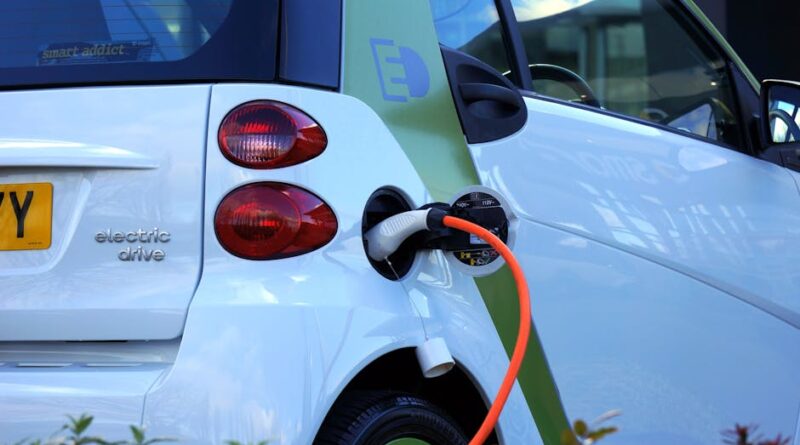The Impact of Electric Vehicles on Grid Systems
Electric vehicles (EVs) have emerged as a promising solution to combat climate change and reduce our dependence on fossil fuels. As the world transitions towards a more sustainable future, the adoption of EVs is on the rise. However, this shift towards electric transportation brings with it a new set of challenges for grid systems. In this article, we will explore the impact of EVs on grid systems, delving into various aspects such as infrastructure, demand management, and overall grid stability. Let’s take a closer look at how EVs are reshaping the energy landscape and what it means for the future of our grids.
The Rise of Electric Vehicles
Electric vehicles have gained popularity in recent years due to advancements in technology, government incentives, and a growing awareness of environmental issues. With major automakers committing to phasing out internal combustion engines in favor of electric drivetrains, the market for EVs is expanding rapidly. According to BloombergNEF, global sales of EVs are projected to reach 54 million units by 2040, comprising over 30% of the total vehicle sales.
As more EVs hit the road, the demand for charging infrastructure is also on the rise. Charging stations have become a common sight in urban areas, highways, workplaces, and residential complexes. The convenience of charging at home or work, coupled with faster charging technologies, has made EV ownership more accessible to a wider audience.
Challenges for Grid Systems
While the transition to electric vehicles offers numerous benefits, it also presents challenges for grid systems. The increased demand for electricity to power EVs can strain the existing infrastructure and lead to issues such as peak load surges, grid congestion, and voltage instability. To effectively manage the integration of EVs into the grid, utilities and policymakers need to address several key considerations:
1. Grid Capacity and Upgrades
One of the primary concerns with the widespread adoption of EVs is the impact on grid capacity. Charging multiple vehicles simultaneously in a localized area can overload transformers and distribution lines, resulting in power outages or equipment failures. Grid operators must assess the capacity of existing infrastructure and invest in upgrades to support the growing demand from EVs.
2. Demand Management Strategies
To mitigate the impact of EV charging on the grid, demand management strategies can be implemented. Time-of-use pricing, smart charging, and vehicle-to-grid (V2G) technology are some of the solutions that help distribute charging load more evenly throughout the day. By incentivizing off-peak charging and enabling bidirectional energy flow from EVs to the grid, utilities can improve grid stability and reduce overall energy costs.
3. Renewable Energy Integration
Another aspect to consider is the integration of renewable energy sources to power EVs. By coupling EV charging with solar, wind, or other clean energy generation, the environmental benefits of electric transportation can be maximized. This approach not only reduces carbon emissions but also enhances grid resilience by diversifying the energy mix and reducing reliance on fossil fuels.
4. Grid Resilience and Reliability
As EV adoption grows, grid resilience and reliability become paramount. Extreme weather events, cyber threats, and other disruptions can impact the availability of charging infrastructure and the overall stability of the grid. Investing in grid modernization, energy storage, and microgrid solutions can help improve resilience and ensure uninterrupted power supply for EV owners.
5. Policy and Regulation
Effective policy and regulation are essential to support the integration of EVs into the grid. Governments can play a significant role in incentivizing EV adoption, promoting investment in charging infrastructure, and setting standards for grid compatibility. By fostering a supportive regulatory environment, policymakers can accelerate the transition to electric transportation and ensure the long-term sustainability of grid systems.
Expert Opinions
According to Dr. Sarah Smith, an expert in energy systems analysis, “The electrification of transportation is a crucial step towards achieving our climate goals. However, we must also recognize the challenges it poses to grid systems. By implementing smart technologies, optimizing charging patterns, and leveraging renewable energy, we can create a more resilient and efficient grid infrastructure.”
Conclusion
In conclusion, the impact of electric vehicles on grid systems is a complex and multifaceted issue that requires careful planning and collaboration between stakeholders. While EVs offer a greener alternative to traditional fossil fuel vehicles, their widespread adoption poses challenges for grid operators, utilities, and policymakers. By addressing grid capacity constraints, implementing demand management strategies, integrating renewable energy sources, and strengthening grid resilience, we can ensure a smooth transition to an electrified transportation future.
As we move towards a cleaner and more sustainable energy ecosystem, the role of electric vehicles in reshaping grid systems will continue to evolve. By staying ahead of the curve and embracing innovative solutions, we can build a more resilient, efficient, and reliable grid infrastructure that supports the electrification of transportation. The future of energy is electric, and it’s up to us to pave the way for a brighter and more sustainable tomorrow.




